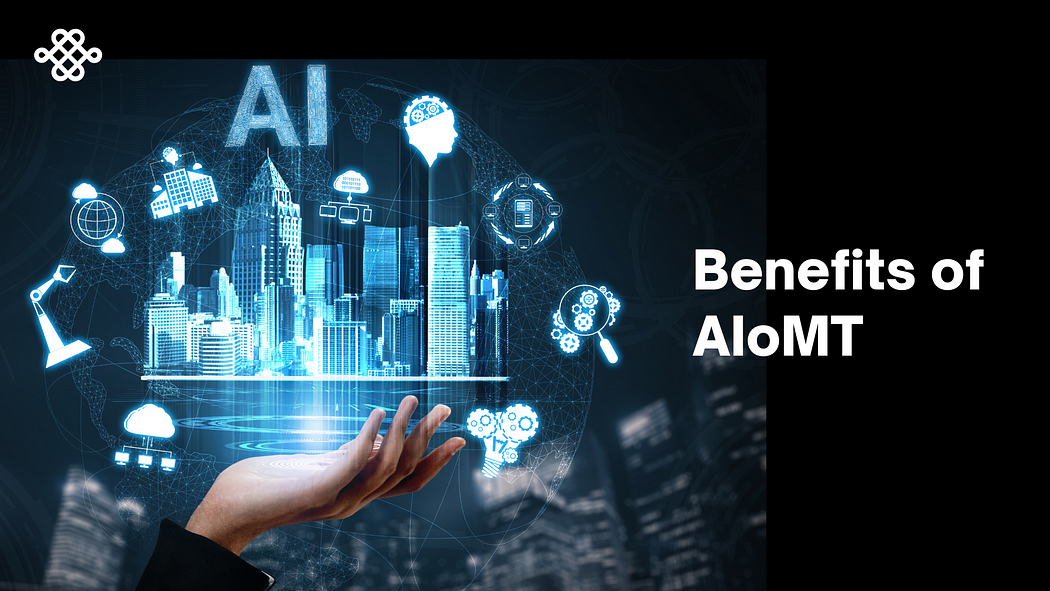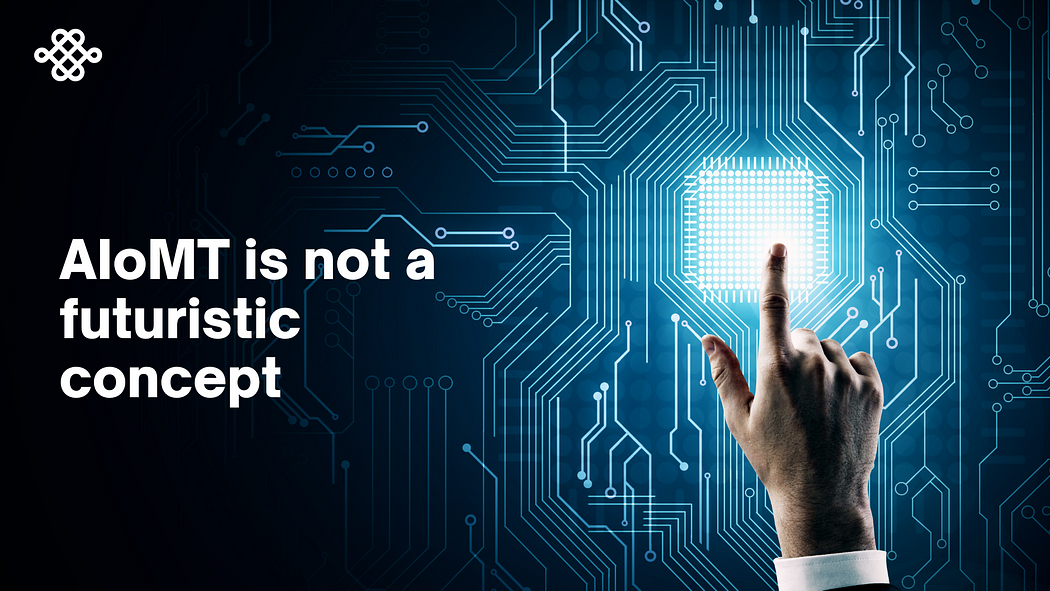Why AIoMT is the New Era of the Healthcare Industry?
Healthcare is one of the most important and challenging domains for applying technology. The demand for better quality, efficiency, and accessibility of healthcare services is increasing, especially in the context of the COVID-19 pandemic. One of the emerging technologies that have the potential to transform healthcare is Augmented Intelligence in the Internet of Medical Things (AIoMT).
Overview
AIoMT stands for Artificial Intelligence in Internet of Medical Things. It is a term that refers to the use of artificial intelligence and machine learning techniques to process and analyze the large amount of medical data generated by various devices and sensors connected to the internet. AIoMT is also helpful for providing remote diagnosis, real-time decision-making, and a reliable, and affordable healthcare system (Journal of Healthcare Engineering, 2022).
Benefits of AIoMT
AIoMT is the integration of artificial intelligence (AI) and machine learning (ML) with the Internet of Medical Things (IoMT), which is a network of connected devices, sensors, and software that collect, transmit, and analyze medical data. AIoMT can provide smart solutions for various healthcare applications, such as remote monitoring, diagnosis, treatment, prevention, and management of diseases (IEEE Journal of Biomedical and Health Informatics, 2023).

Some of the benefits of AIoMT are:
• It can improve the accuracy and timeliness of diagnosis by analyzing large amounts of medical data and providing insights and recommendations to healthcare professionals and patients.
• It can enhance the quality and effectiveness of treatment by personalizing and optimizing the delivery of drugs, therapies, and interventions based on the patient’s condition, preferences, and feedback.
• It can reduce the cost and complexity of healthcare by automating and streamlining various processes, such as data collection, documentation, billing, and reporting.
• It can increase the accessibility and availability of healthcare by enabling remote and mobile services, such as telemedicine, telehealth, and mHealth.
• It can empower patients and caregivers by providing them with more information, control, and support for their health and well-being.
AIoMT is not a futuristic concept

There is no doubt that AIoMT is not a futuristic concept because it is already being implemented in many healthcare settings around the world. It is already being implemented in many healthcare settings around the world. For example:
• In China, a hospital used AIoMT to monitor and treat COVID-19 patients remotely. The system used smart bracelets, thermometers, blood pressure monitors, and oxygen saturation meters to collect vital signs data from the patients at home. The data was then transmitted to a cloud platform where an AI algorithm analyzed it and alerted the doctors if any abnormality was detected (Britannica, 2023).
• In India, a startup developed an AIoMT device that can detect breast cancer in less than five minutes. The device uses a handheld probe that scans the breast tissue with near-infrared light and measures the metabolic activity of the cells. The data is then sent to a smartphone app where an AI algorithm classifies it as benign or malignant (Merriam-webster, 2023).
• In the US, a company created an AIoMT platform that can predict cardiac arrest up to four hours before it happens. The platform uses sensors embedded in hospital beds to measure the heart rate, respiration rate, movement, and posture of the patients. The data is then processed by an AI algorithm that identifies patterns and signs of deterioration (Byjus, 2023).
These examples show that AIoMT is not only feasible, but also beneficial for improving healthcare quality, efficiency, and accessibility. AIoMT is a reality that is changing the way we deliver and receive healthcare services.
The future of AIoMT

The future of AIoMT is promising and exciting, as it can improve the quality, efficiency, and accessibility of healthcare services. Some of the possible trends and developments of AIoMT are:
• AIoMT will enable federated learning-based computing for socially implemented IoMT systems. This means that the IoMT devices, such as smartwatches and wearable sensors, will be able to collaborate and learn from each other without relying on centralized servers or cloud services. This will enhance the privacy, security, and scalability of the data processing and decision making in the IoMT devices
• AIoMT will integrate with other emerging technologies, such as blockchain, 5G, edge computing, and cloud computing. These technologies will provide more support and infrastructure for data transmission, storage, analysis, and verification in the AIoMT systems. This will increase the reliability, performance, and interoperability of the AIoMT solutions
• AIoMT will create more personalized and patient-centric healthcare services. By using AIoMT devices, patients and caregivers will be able to access more information, control, and feedback about their health conditions and treatments. AIoMT devices will also be able to tailor and optimize the delivery of drugs, therapies, and interventions based on the patient’s preferences and feedback. This will enhance the effectiveness and satisfaction of the healthcare outcomes
AIoMT is not only a top technology in healthcare; it is also a key enabler for achieving universal health coverage and sustainable development goals. AIoMT has the potential to transform healthcare from a reactive and curative approach to a proactive and preventive one. AIoMT can also reduce the cost and complexity of healthcare by automating and streamlining various processes. AIoMT can also increase the accessibility and availability of healthcare by enabling remote and mobile services.
Conclusion
To conclude, as technology advances and more data becomes available, AIoMT will continue to evolve and offer new possibilities for improving health outcomes and quality of life. AIoMT is not only a top technology in healthcare; it is also a key enabler for achieving universal health coverage and sustainable development goals.
References
Chinmay Chakraborty et al., 2023. Guest Editorial Special Issue on AIoMT-Enabled Federated Learning-Based Computing for Socially Implemented IoMT Systems: How Will Healthcare Systems Change?. IEEE Transactions on Computational Social Systems. Retrieved Aug 10, 2023, from https://ieeexplore.ieee.org/document/10201809/authors#authors
George et al., 2023. Retrieved Aug 10, 2023, from https://www.britannica.com/science/atom
Kelsey Taylor, 2023. Future of AIoT (Artificial Intelligence of Things) Technologies. Hitechnectar. Retrieved Aug 10, 2023, from https://www.hitechnectar.com/blogs/future-of-aiot-technologies/
Malik Alazzam et al., 2022. Augmented Intelligence in Internet of Medical Things (AIoMT). Journal of Healthcare Engineering. Retrieved Aug 10, 2023, from https://www.hindawi.com/journals/jhe/si/982649/
Comment
Latest news
2025 Healthcare Breakthroughs: Trends to Watch!
Most viewed
Mind Matters: Prioritizing Mental Health with OOMY
In today’s fast-paced world, mental health is often overlooked. OOMY is here to change that by putting your well-being first. With its suite of mental health features, this app acts as your digital companion, guiding you through life’s ups and downs.
Unveil Your Inner Voice: OOMY’s Random Tarot Messages
Do you ever feel like the universe is trying to tell you something? OOMY’s Random Tarot feature brings a touch of magic to your everyday life. Whether you’re seeking guidance, inspiration, or just a moment of reflection, these cards offer a doorway to self-discovery.
Walk Your Way to Wellness: Discover Happy Hike on OOMY
Winter is here, and staying active can be a challenge. With OOMY’s Happy Hike feature, walking becomes more than just a physical activity – it’s a holistic experience that connects you to nature and your inner self. Whether you’re strolling through a park, jogging along a trail, or simply taking steps around your neighborhood, every movement matters.
Embrace Winter Wellness with OOMY's Meditation Feature
Winter mornings can be tough. The cold weather tempts us to stay in bed a little longer, leaving us feeling sluggish and uninspired. However, starting your day with morning meditation can change your entire outlook. Let’s explore why and how OOMY’s meditation feature can help you embrace the chill while prioritizing your mental and physical health.